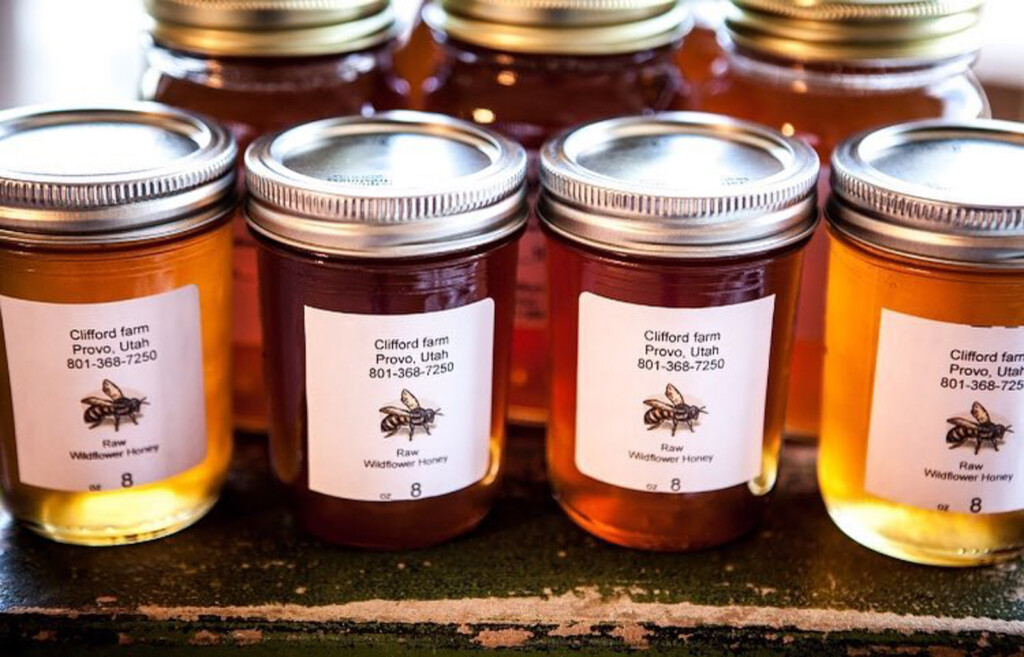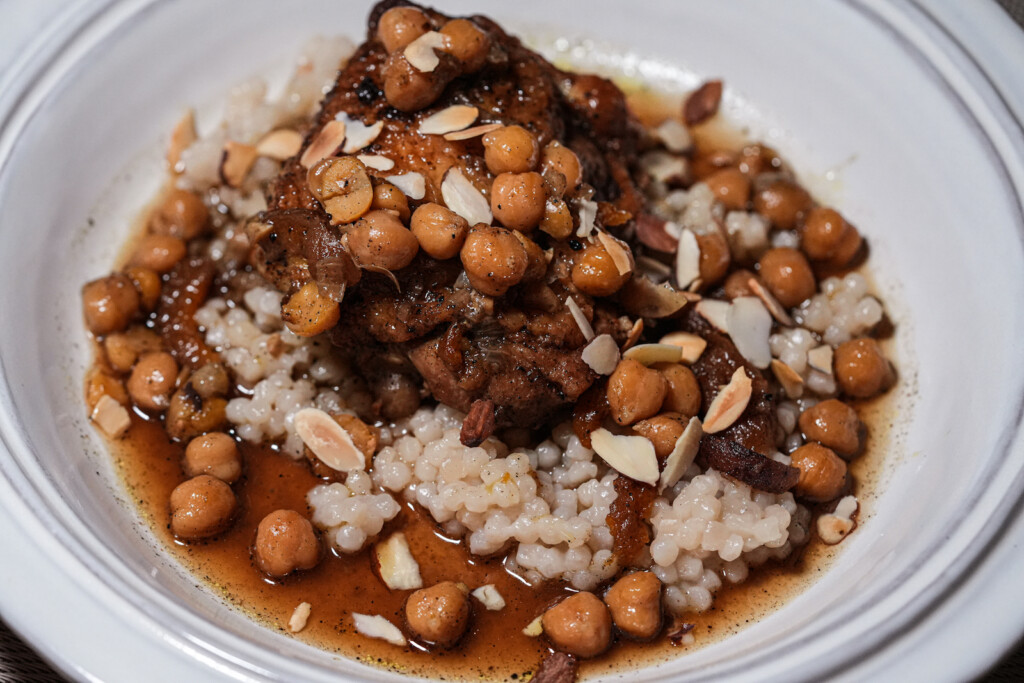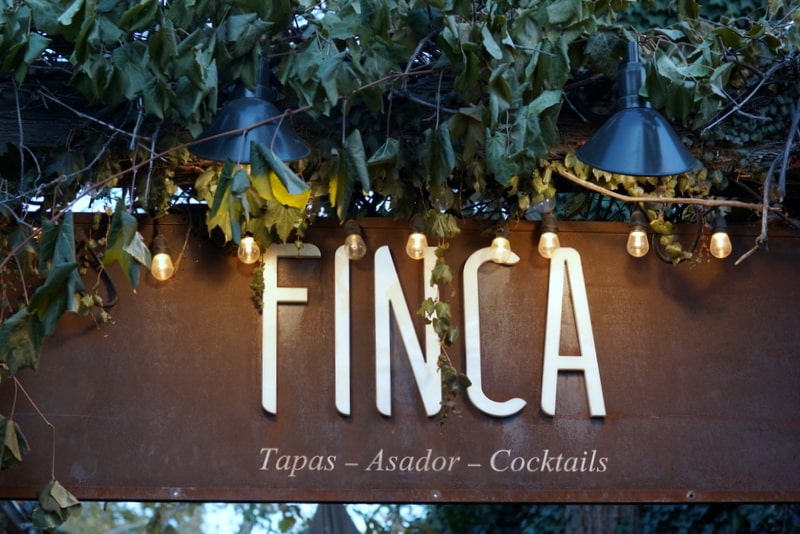
Finca. In Spanish the word finca is commonly translated as “farm,” but more specifically refers typically to an “estate.” As Wikipedia puts it: “a piece of rural or agricultural land, typically with a cottage, farmhouse or estate building present, and often adjacent to a woodland or plantation.”
Well, that description is not one that fits Finca restaurant in Salt Lake City very well. Or at least, not literally. Finca isn’t adjacent to a woodland, it’s not an estate, and it isn’t a piece of the rural landscape. And yet, finca makes sense in the hands, heart and mind of Scott Evans.
Finca restaurant in SLC has had three lives, so far. Finca 1.0 was located at 1100 East and approximately 1200 South – when restaurateur Scott Evans opened it in 2012. I loved it.
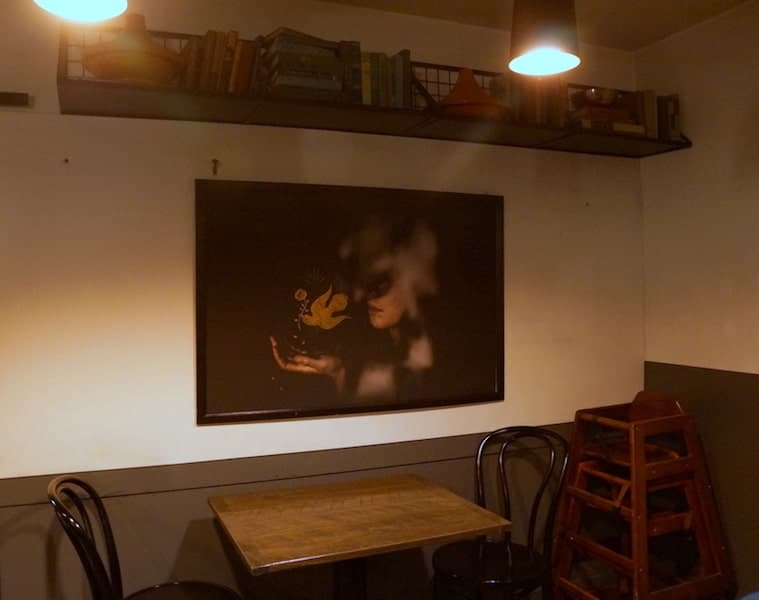
At the time, I wrote the following about people who complained that Finca 1.0 wasn’t “authentic enough” as a Spanish-style tapas bar and restaurant. I have lived in Spain and said, “I’ve seen every model and make of tapas bar and restaurant in Spain, from cozy little dives with bullfight posters on the walls, to eye-popping, modernist spots like Seville’s Boreas restaurant. Unlike the classic French bistro or brasserie, there really isn’t such a thing as a prototypical tapas joint.” In retrospect, I’d add that there probably isn’t such a thing as a prototypical French bistro or brasserie, either.
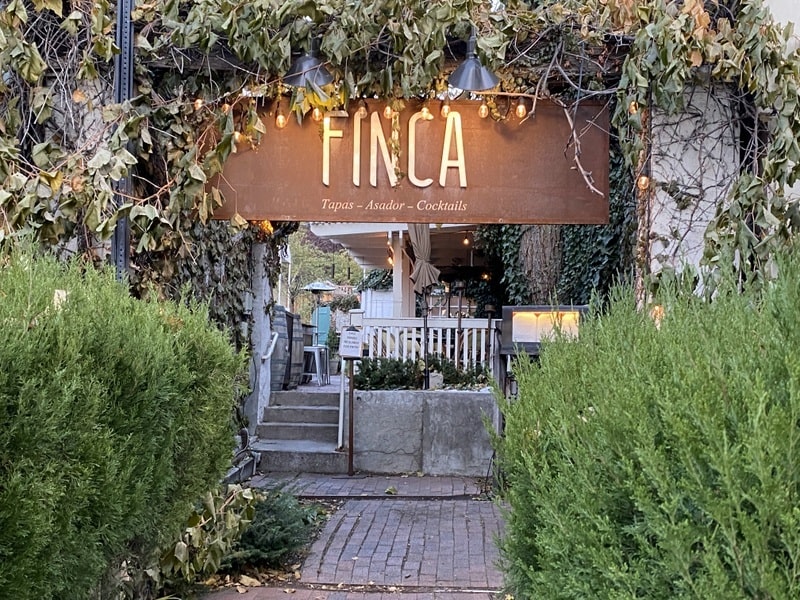
Scott Evans would move Finca, temporarily, to the space on 200 South downtown that eventually would become his George restaurant and Bar George – now closed. That was Finca 2.0. Now, Finca has found a new home – third try is a charm, hopefully – in the 15th & 15th space that was occupied by Evans’ Trestle Tavern and Fresco Italian Cafe before that. Still with me? That’s what I’m calling Finca 3.0, which returned after a two year hiatus in the midst of a pandemic. Evans named Michael Richey the new Finca chef. They’ve had a long relationship; Richey helped launch Evans’ Pago restaurant over a decade ago. All things old are new again.
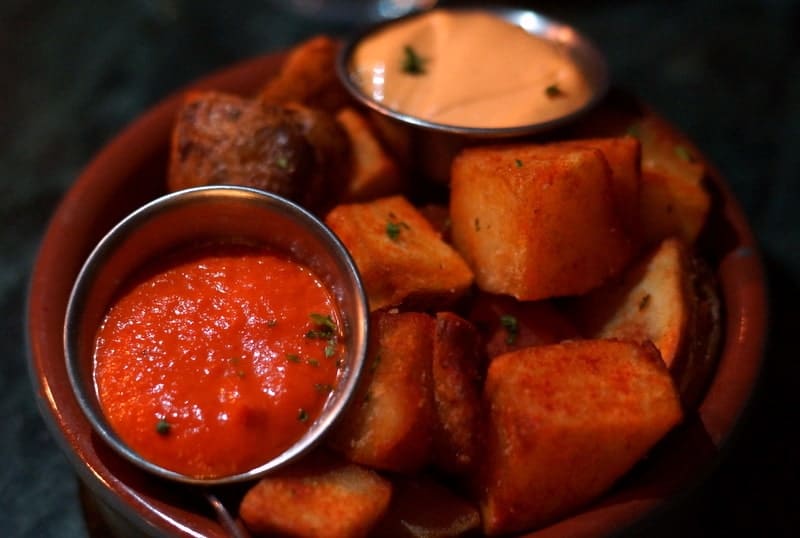
In each of its incarnations, Finca has offered Utahans authentic Spanish cuisine, both traditional and modern, ranging from classics like patatas bravas ($5) and tortilla Española ($5) to more contemporary dishes such as ensalada remolacha ($9): beet salad with apple, Leonora cheese and arugula.
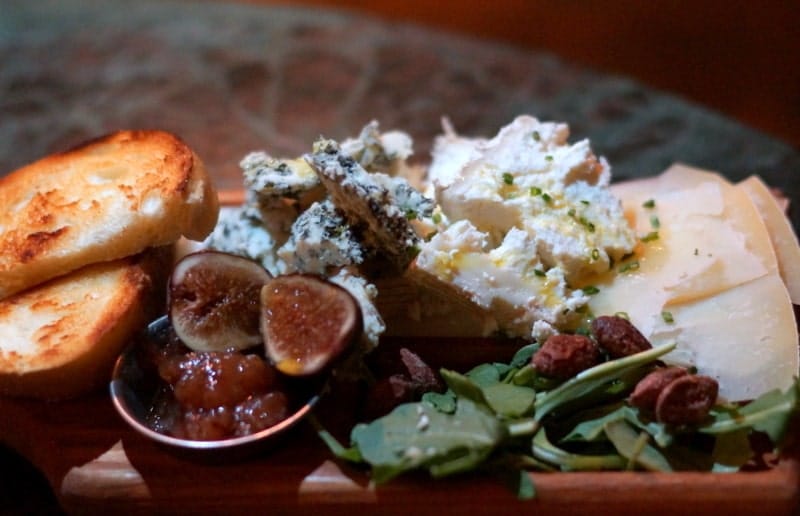
I am so used to seeing, these days, restaurants charging in the high teens and even low twenties for appetizers. So it’s refreshing to visit a restaurant like Finca where pintxos – Spanish-style bar/restaurant snacks – are priced mostly $5-$6. A good place to kick off dinner at Finca is sharing either the charcuterie plate (jamon serrano, bresaola, chorizo and daily accoutrements) or the cheese plate – plato de queso – with roncal, picon cabrales, manchego, and accompanied by things like figs, grilled bread, greens and nuts.
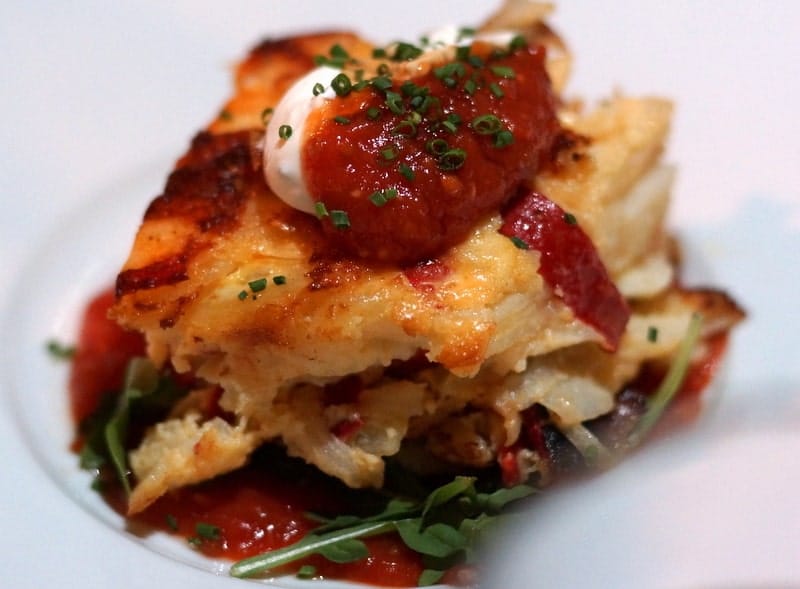
Although it’s often described as a Spanish “omelette,” tortilla Española ($5) at Finca isn’t what you’d normally think of as an omelette, which is why the word “omelette” appears in quotation marks on the menu. It’s more like Spanish potato gratin, in my opinion. The tortilla Española is luscious layers of potato, egg and caramelized onions on a bed of arugula and topped with house-made ricotta and romesco sauce, garnished with chopped chives.

Calabaza is the Spanish word for pumpkin and the calabaza dish ($7) at Finca is every bit as delicious as it looks. It’s a terra cotta bowl filled with creamy roasted pumpkin and topped with shaved onions, pumpkin seeds and dates – a simple but superb dish from the tapas menu which also includes ceviche ($12), citrus and arugula salad ($9), torta rustica ($9), ham & cheese croqueta ($8) and others.
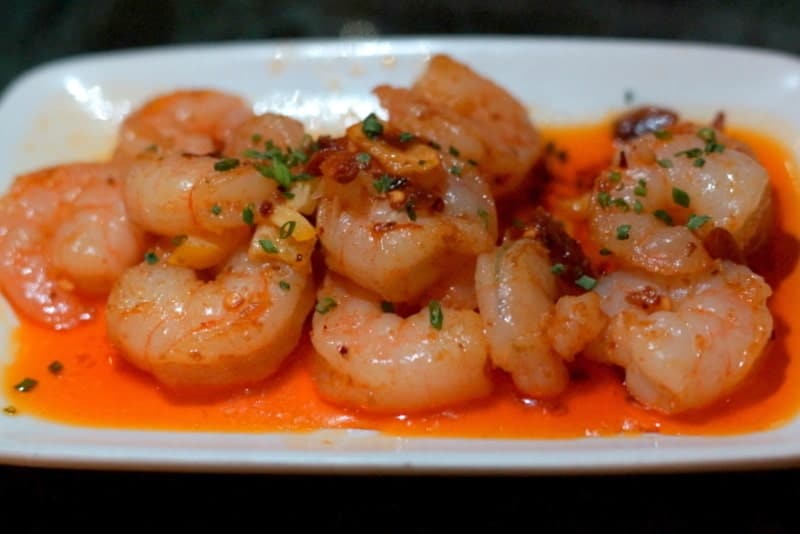
The term tapas is ubiquitous nowadays; I’ve even seen it in sushi restaurants. But originally, a tapa (tapas is plural) is a small, savory dish typically served at bars in Spain. They are snack-size bar bites, essentially. At Finca, the tapas are more substantial and include items like baked rockfish with roasted eggplant, chermoula (a pungent Morrocan herb sauce), zucchini and roasted red peppers. Our party of four very much enjoyed Finca’s variation on a classic Spanish tapa called gambas ($13). This was a scrumptious shrimp dish – about a dozen tender sauteed shrimp bathed in garlic-chili oil, crispy garlic and preserved lemon. For a taste of southern Spain and Morocco, give the pinchos morunos tapas a try: Moroccan lamb skewers with yogurt and harissa sauce ($15).

The platos section of the Finca menu is a selection of larger, entree-size plates that are very sharable. There’s Spanish seafood paella, of course, as well as a wagyu steak with romesco sauce, a lamb burger, and a couple of tagines. Tagine is a word with two meanings: it’s both a North African clay or ceramic cooking vessel and the stew-like stuff that gets cooked in it. Most tagines I’ve come across have been fish, meat or poultry-based. Finca offers vegetarians a tagine option with their tagine de verduras ($15). It’s a big bowl filled with veggie stew consisting of garbanzos, carrots and other seasonal vegetables, cauliflower, braising greens, olives, mint, raisins and tomato jam. It’s a vegetarian dish that non-vegetarians will love.

Since Finca is a Scott Evans restaurant, the wine list is exceptional. Evans is a knowledgeable aficionado of all wine, but Spanish wine in particular. The Finca wine list spans the wine regions of Spain from Priorat, Toro and Ribera del Duero to Castilla y Leon, Rioja, Bierzo, Navarra, Penedes, Mallorca and more. For Spanish wine lovers, the Finca wine list is cielo (“heaven” in Spanish). With Evans’ input, our party ordered two wonderful wines that we might not have otherwise considered: a Rosé of Tempranillo called Solar de Randez Rosado 2018 from Rioja ($35) and a very interesting Txakoli from Bodega Aizpurua ($45) – a slightly effervescent Basque white wine. In addition to a terrific selection of wines by the glass and bottle, Finca also offers cocktails, spirits, beer and cider.
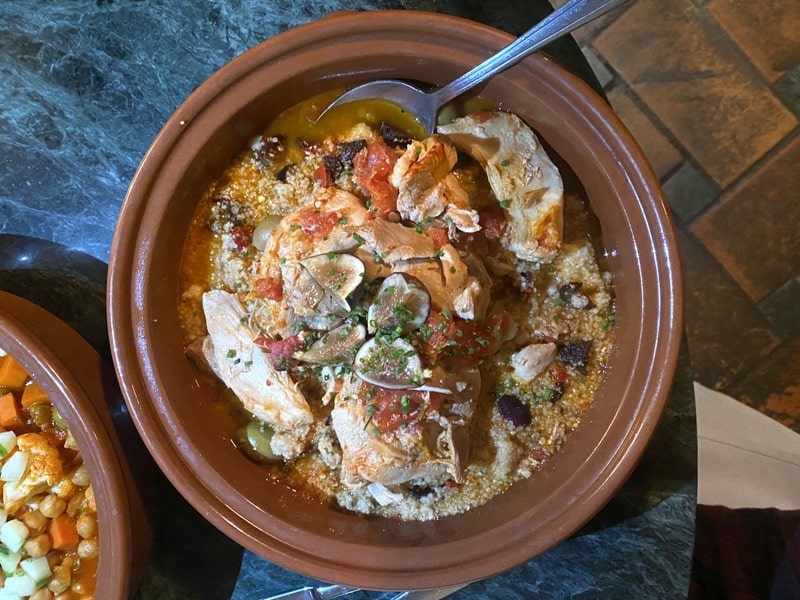
Having enjoyed the vegetable tagine so much, we ordered a second: tagine de pollo ($17). As I mentioned, tagines are made for sharing and this one was a plentiful portion of roasted and stewed chicken thighs with fall veggies, couscous, figs and olives. Both of Finca’s tagines are terrific.
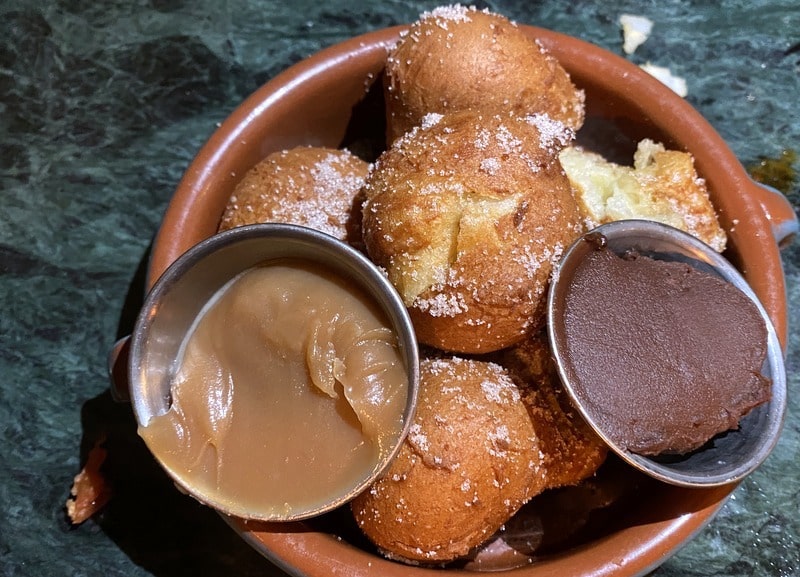
Needless to say, having enjoyed so many Finca dishes our party nearly needed assistance to leave the restaurant. But not before we tried one of the postres (desserts). We decided on the churros ($6), a perfect choice. Churros are fried, Spanish-style cinnamon-spiced pastries – sort of similar to donut holes – served with chocolate and caramel dipping sauces.
I’m glad that through the years and in turbulent times with long odds, Scott Evans and his team have kept Finca alive, even raising it from the dead. I especially like Finca 3.0 because the former Fresco location with its beautiful courtyard reminds me more of Spain than did the previous ones. For serious Spanish fare in an inviting eatery with excellent service: Viva la Finca!
Photos by Ted Scheffler
Culinary quote of the week:
“The belly rules the mind.” — Spanish Proverb
FOR MORE RESTAURANT REVIEWS GO HERE.
THIS CONTENT IS FROM UTAH BITES NEWSLETTER.
Subscribe to get the latest Utah Bites news and reviews
 Originally trained as an anthropologist, Ted Scheffler is a seasoned food, wine & travel writer based in Utah. He loves cooking, skiing, and spends an inordinate amount of time tending to his ever-growing herd of guitars and amplifiers.
Originally trained as an anthropologist, Ted Scheffler is a seasoned food, wine & travel writer based in Utah. He loves cooking, skiing, and spends an inordinate amount of time tending to his ever-growing herd of guitars and amplifiers.
SUPPORT OUR SPONSORS: click on their logos to visit their website
[envira-gallery slug=”food-logos”]



